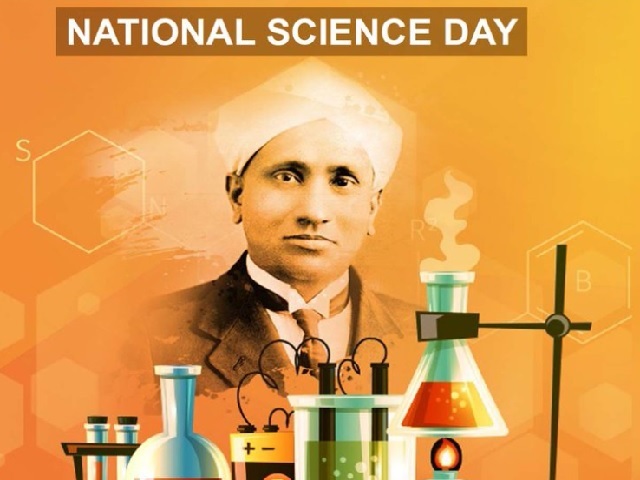


The Raman Research Institute (RRI) in Bengaluru is organizing an Open Day event on February 28 in celebration of National Science Day. This annual event commemorates the discovery of the Raman Effect by Sir CV Raman, who received the Nobel Prize for his groundbreaking contributions to science. RRI will welcome over a thousand students and science enthusiasts from both government and private institutions to participate in the celebrations. Don't miss the chance to explore the world of science at RRI's Open Day.
National Science Day: Celebrating the Discovery of the Raman Effect
National Science Day is celebrated in India on February 28 to commemorate the discovery of the Raman Effect by Sir C. V. Raman. This annual event recognizes the importance of science and technology in our lives and encourages young people to pursue careers in these fields.
The Raman Effect is a phenomenon in which light interacts with molecules and is scattered, producing a change in its frequency. This discovery revolutionized the field of spectroscopy and led to the development of new technologies such as Raman spectroscopy, which is used to identify and analyze molecules.
In honor of this discovery, the Raman Research Institute (RRI) in Bengaluru organizes an Open Day event on February 28, inviting students and science enthusiasts to explore the world of science. This year, the event will showcase RRI's research and educational programs, as well as interactive exhibits and hands-on activities.
FAQs:
What is the significance of National Science Day? National Science Day commemorates the discovery of the Raman Effect by Sir C. V. Raman, a groundbreaking achievement in science.
Who was Sir C. V. Raman? Sir C. V. Raman was an Indian physicist who won the Nobel Prize in Physics in 1930 for his discovery of the Raman Effect.
What is the Raman Effect? The Raman Effect is a phenomenon in which light interacts with molecules and is scattered, producing a change in its frequency.
How is the Raman Effect used in science and technology? Raman spectroscopy, based on the Raman Effect, is used to identify and analyze molecules and has applications in various fields such as chemistry, biology, and materials science.
How can I participate in National Science Day celebrations? You can participate in National Science Day celebrations by attending events organized by scientific institutions and organizations in your area. The Raman Research Institute in Bengaluru hosts an Open Day event on February 28, where you can explore exhibits and participate in hands-on activities.
For further information, please visit:

After an eventful stay aboard the International Space Station, the SpaceX Dragon spacecraft carrying IAF Group Captain Shubhanshu Shukla and three other astronauts is scheduled to reenter Earth's atmosphere and splashdown in the Pacific Ocean off the coast of California. The crew's return marks the end of the historic Axiom Space Mission-4 (Ax-4) and Shukla's remarkable journey, having completed over 310 orbits and travelled 1.3 crore kilometers in space. Final preparations for the return include detaching the capsule's trunk and deploying parachutes before splashdown.

Indian Astronaut Group Captain Shubhanshu Shukla has successfully completed his historic 20-day mission to the International Space Station. As the first Indian to visit the ISS, Shukla underwent various medical checks upon his return to Earth, marking an important milestone in India's human spaceflight journey. The Axiom-4 mission, which also included three other crew members from the US, Poland, and Hungary, carried out 60 experiments from 31 countries during their time in microgravity. Their successful mission paves the way for India's own indigenous Gaganyaan mission in 2027.

The recent splashdown of the SpaceX Dragon spacecraft carrying India's first astronaut, Shubhanshu Shukla, has prompted many questions about why spacecraft land in water rather than on land. This article provides a detailed explanation of the benefits and history of splashdowns, which have been used in many successful space missions. As Shukla returns safely to Earth, this article offers a deeper understanding of the reasons behind the splashdown method.

Indian astronaut Group Captain Shubhanshu Shukla made history by returning to Earth on Tuesday after spending 18 days in space on the Axiom-4 mission. The spacecraft splashed down near California's coast, marking India as a serious player in the global space community. Defense Minister Rajnath Singh congratulated Shukla's safe return and praised his achievements, calling it a proud moment for the country. Journalists captured Shukla's triumphant homecoming, as he stepped out of the Dragon capsule with a beaming smile.

A preliminary report released by India's Aircraft Accident Investigation Bureau (AAIB) reveals confusion in the cockpit and a sudden loss of thrust that ultimately led to the deadly Air India crash last month. While the report clears Boeing and engine maker GE of any responsibility, it raises questions about the position of critical fuel cutoff switches. This tragic incident poses a challenge for Tata Group, who recently took over Air India and is working to restore its reputation and revamp its fleet. Further investigation will be needed to determine how the fuel switches moved to the cutoff position during the flight and what caused the confusion in the cockpit.

A recent report by the World Health Organization (WHO) has identified heart disease as the leading cause of mortality globally, with over 39 million deaths recorded in 2021. As the world's population continues to grow, basic amenities face significant challenges, and diseases are spreading due to poor lifestyle choices. Furthermore, the rise in chronic illnesses such as COPD and diabetes among young individuals is a cause for concern. With new technologies and lifestyle advancements, it is essential to prioritize health and consult with medical professionals before making any significant health changes.

A mild earthquake of 4.4 magnitude shook Delhi and neighboring regions on Thursday morning, originating in Haryana's Jhajjar district. The National Centre of Seismology reported that the earthquake was shallow and could have caused significant damage, but there were no immediate reports of any damage. Incessant rainfall and thunderstorms have also affected Delhi's weather, with a red alert issued for the entire Delhi-NCR region. On a positive note, Delhi's air quality index has remained in the satisfactory category for the last 15 days.

Health Minister Veena George confirmed that a 78-year-old woman in Malappuram, who was on the Nipah virus contact list, has tested negative for the virus after her death. Currently, 498 people across the state of Kerala are under observation for the Nipah virus, with the majority of them in Malappuram and Palakkad.

India's Minister of Petroleum and Natural Gas, Hardeep Singh Puri, is exploring projects in Norway, where the government is funding the largest carbon storage project in the country. This aligns with India's ambitious energy transition agenda. The project involves capturing CO2 emissions from industrial sources and storing them underground, which can help decarbonise industries and mitigate climate change.

A recent study published in The BMJ found that intermittent fasting might be just as effective as traditional calorie-restricted diets, particularly for those with pre-existing health conditions. Despite the limitations of the study, which focused on trials lasting less than 24 weeks, it provides some indication that intermittent fasting can result in weight loss and improved cardiometabolic risk factors. However, the study authors caution that longer-term research is needed to confirm these effects.